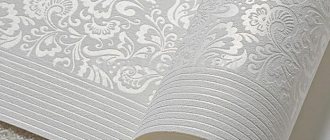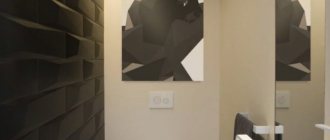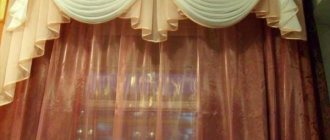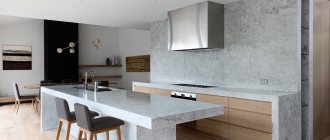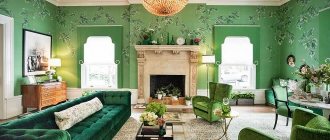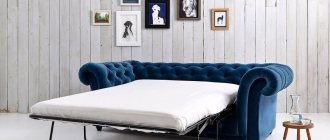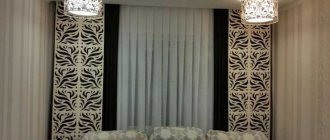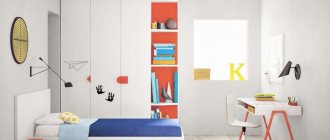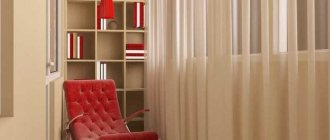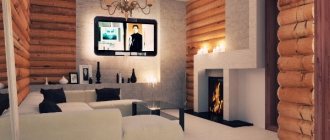What is molding
Molding is a decorative overlay strip with a three-dimensional configuration
, with which you can create interesting interior solutions in different architectural styles.
With its help, you can frame windows and doors, separate different types of external covering from one another, highlight decorative items, make wallpaper inserts and much more.
This design element goes well with all kinds of finishing materials - plaster, paint, panels, wallpaper.
Wall molding is a long strip starting at 2 m in length. Its width can vary from 1 to 10 cm or more. These decorative strips can be flat or made in the form of a baguette - beveled at an angle, convex and carved.
To decorate the composition, small decorative details are also used, connecting the wall moldings into a single composition. For example, corners of different configurations, decorated with a special pattern, curved and soft parts for decorating arches, and much more.
Types of moldings
To decorate the walls in the interior, you can choose moldings from a variety of materials - wood, plastic, metal, plaster. Modern industry offers a wide variety of types of these decorative finishing elements.
Wood.
This is a very beautiful style solution, because natural wood in the interior always looks respectable.
However, this finish is only suitable for natural veneer panels. It must be selected very carefully in terms of pattern and texture
so that it looks harmonious. It cannot be painted; you need to work with it very carefully so as not to damage the surface, since it will be quite difficult to correct the mistake. Wooden planks and cornices are attached using glue, screws or special nails.
Plaster.
It is usually used to decorate ceilings, joints between walls and ceilings, and corners. It is durable, but too heavy, so it will be very difficult for a non-professional to work with it. Attached to the surface using alabaster. Gypsum decor can be painted in different colors.
Made from polyurethane
. The most popular today, since its installation is accessible to almost any housewife.
Lightweight, quickly attached with glue to a whitewashed, painted surface or wallpaper. It cuts easily, but also breaks. However, you can correct the mistake without any problems by carefully plastering it.
It is not afraid of moisture, can be painted, and is easy to clean when used for a long time. Not as durable as plaster
. Attached with glue.
Metal.
With its help, for example, corners are formed when laying tiles. It can also serve as an independent decorative element if installed under the cladding or in the form of a slats. It practically doesn’t go well with wallpaper. Very demanding to install.
Plastic moldings.
They are mainly used for decorating corners. Easily stick to almost any surface. They are not durable in use, although they wash well. Cannot be painted.
Flexible
. Made of plastic, used to decorate arches and other curved elements. It is also used when installing suspended ceilings to close the joint.
Wall moldings also differ in shape:
- straight planks;
- baguette;
- cornice;
- stucco;
- corners.
To give the interior a finished look, several types of molding can be used simultaneously.
How to separate two types of wallpaper on a wall: molding as a decorative component
Wallpaper with molding has been very popular for many years. You can find similar wall decor in almost every home. With the help of this unusual element you can make the room very original and sophisticated.
Moldings can be used instead of platbands or plastic corners, which are usually used to finish the joints of window slopes with walls
How to separate two types of wallpaper on a wall? The answer to this question is very simple. You just need to apply an interesting decorative element - molding. Using it, you can combine different colors and types of wallpaper, while creating a smooth transition from one material to another.
Experienced designers can solve the most intricate problems with the help of moldings. Regular wallpapering on the wall will ultimately take on a finished and ideal look.
Molding is used to:
- Hide small wall defects;
- Decorate the joints between the wall and the ceiling;
- Smooth out unevenness;
- Give the room a stylish and attractive look.
Related article: Procedure for installing front door trim
Decorating walls with moldings using vertical elements will help visually increase the space from ceiling to floor. For example, imitation of columns will increase the ceiling height.
Molding as a decorative element
Molding for walls in the interior can perform a variety of tasks - edging decorative surfaces, adding completeness to the entire composition, separating or, on the contrary, combining different zones, raising or lowering the ceiling, visually expanding or narrowing the space. Their main purpose is to create a certain style:
- Baroque.
The molding “reigns” here, richly complemented by small details with convex carved patterns, mostly floral. These are light colors, gilded stripes and corners, rich stucco molding, baguettes and cornices at the junctions with the ceiling. Panels of wallpaper or decorative plaster are created on the walls, framed with light and carved planks. - Provence
. Simple, straight lines, without unnecessary details, relief molding at the ceiling and floor. Painted in light colors suitable for the overall color scheme - gray, beige, white. Molding structures are practically not used on walls. -
Scandinavian.
This style does not involve decorating the walls with moldings. Windows and doorways stand out here; in extreme cases, you can use a strict molding near the ceiling and a modest one near the floor. The color is white or slightly beige, matching the general color scheme. - Mediterranean.
There are many design options here - richly decorated cornices, moldings, framing of windows, doors, arches, decorative panels with stucco. Curved lines, a large number of small carved details. The main emphasis in the composition is the design of photo wallpapers on the walls and paintings that imitate access to a balcony, garden, street or seashore. Columns and half-columns are also used. - English.
The main detail of the interior will definitely be the fireplace. It can be done using decorative elements. Moldings in the interior for dividing wallpaper in the English style should be chosen with a strict geometric relief. The cornice is required along the entire surface of the junction with the ceiling; it covers all corners and niches in the room. The fireplace is also decorated with slats with a simple relief that frame the hearth, and a baguette decorating the junction of the lid and the walls. - Classic
. An example of the classic style are apartments in old houses. There are windows of unusual shape with a semicircular top, arches, and columns. Moldings are used in a variety of configurations. Windows, doors, arches are framed. A baguette is used near the ceiling. In the classic style, wooden panels are often used to decorate the walls, which means that interesting solutions for wooden decoration are possible.
Where can they be used?
Moldings in the interior are used in the following cases:
- To harmonize the interior. Smooth empty walls and flow are not always attractive. The use of moldings allows you to make the interior more harmonious.
- To separate colors, materials, textures on walls.
In classic interiors, molding is a tradition
- For masking cables, communication lines, etc.
- For decorating joints of slabs and wallpaper.
- Zoning of premises.
- Design of doorways.
- Decoration of paintings, mirrors, wall-mounted TVs, etc.
The main function that moldings perform in the interior is decoration and decoration. At the junction of materials with different thicknesses, textures, and colors, this method of decoration allows you to turn an unaesthetic transition into a decorative element. The method is easy to install, most of it has a low cost.
Wall decoration
Polyurethane is most often used because it is easy to install. With the help of such light decorative elements you can turn almost any idea into reality. Here are examples of such solutions:
The framing of the photo wallpaper will serve as the main accent of the entire architectural solution.
You can completely frame the photo wallpaper
using strips and corners.
Or just mark the boundaries by separating part of the wall. Apply a cornice, separating the array of photo wallpaper on the wall from the ceiling.
Various frames with wallpaper are often used to accentuate the interior items.
For example, serve as the head of a bed, or be a background for furniture, for example, a soft corner. You can create a pop of color on a wall using framed decorative wallpaper. This technique can serve as an accented background for an interesting wall composition with a candlestick, sconce, or flower pot.
Strips of different sizes and patterns separate wallpaper of different colors and textures from each other.
r to create an accent or divide the space of different zones. Decor for wallpaper joints on the wall well masks uneven edges and other imperfections.
Moldings are an excellent solution for decorating paintings, mirrors, and photographs. Original carved decorative moldings with stucco and fancy corners are suitable for a mirror. Photos are designed with more modest and strict thin lines. Paintings should be framed depending on the chosen interior style and the image itself. These can be richly decorated baguettes or simple planks.
Moldings for doors and windows complete the overall composition,
They give comfort and support the chosen style, and also help hide defects. Wide relief strips, baguettes and cornices are perfect here.
The trend is to decorate walls with geometry. These are squares, rhombuses and triangles that are combined into interesting patterns that cover the entire space or only a small part of the surface, imitating figures scattering in artistic chaos. This idea can be realized using thin simple strips and corners of different configurations.
Modern style: wallpaper with molding in the interior
Moldings, in the modern world, are used very often. It is used for decoration so that the room looks more stylish, elegant and majestic with it. Molding can be of different shapes, sizes and colors. It is made from different materials. Also, the molding can be flexible and take on the shape required by the designer. It can be found in the form of: planks, panels, baseboards, cornices, frames and other decorative elements.
The material for making molding can be different: polyurethane, polystyrene, plastic, polystyrene foam, wood, gypsum and even marble
Wallpaper with molding in the interior is the most popular decorative element. It can be used in bedrooms, living rooms, hallways, as well as in apartments - studios and offices.
Using decorative molding, you can create different styles, such as rococo, classic or empire. They can also be used to decorate electric or decorative fireplaces, which are now widespread.
Article on the topic: How to clean the seams between tiles on the floor: wash the rocker, remove dirt from between the tiles, bleach the floor
Molding is mainly used in the following cases:
- They make an imitation of columns and select panels;
- Window and door openings are trimmed;
- Divide the room into zones;
- Decorate the ceiling;
- Frame paintings, photographs, mirrors, lamps and other elements.
Decorating a room with moldings will allow us to make it unusual, sophisticated, stylish and modern. With its help, we can make any of our desires come true.
Gluing moldings to a wall with wallpaper
Polyurethane moldings are very easy to work with.
Much depends on how you plan to update the wall in the future during the next renovation - either completely remove the covering along with all the decorative elements, or just replace the wallpaper without touching the moldings. In this regard, there are two ways to glue moldings to a wall with wallpaper:
- first - first attach the moldings, and then carefully cut out the wallpaper and glue it to the wall;
- the second - first they glue the wallpaper, and then the joints are covered with planks and stucco.
Simple instructions on how to glue moldings to a wall with wallpaper:
- Carefully measure and mark on the wall with a simple pencil where all the decorative elements will be located.
- Then they measure out the planks, carefully cut them into the required sections, and carefully check how the joints, corners, and small parts will be located.
- They try it on, applying complex parts to the wall, adjusting all the joints and corners.
- Glue is applied pointwise
to polyurethane parts . Leave for a few minutes for the glue to dry a little and thicken. Otherwise, the glued strip may fall off or move out. - Place the part exactly along the markings, gently press, and hold for 5-10 seconds.
Working with moldings is not particularly difficult, but you need to know some nuances.
In order for the molding to fit well, before starting work you need to bring it into the room and leave it for a day. The material must “get used” to the temperature and humidity of the air. First you need to glue the corner parts, and only then the straight ones. This way you will avoid accidental mistakes and get straighter lines.
Before gluing parts to the plaster, you should slightly moisten the surface with water.
. The cracks and gaps that remain after installation must be sealed with plaster or mounting adhesive. Then the whole composition will look solid. You need to paint the moldings a day after gluing.
What are wall moldings made of?
One type of classification of moldings involves the raw materials used in production. Both light and rather heavy materials are used here. How certain models look in different interiors can be judged by photos of moldings on the walls, and the advantages and disadvantages of all materials are shown by the data provided in the table.
| Material used | Advantages | Flaws |
| foam moldings | low price; ease; easy installation | used for decorating perfectly smooth surfaces; high level of fire hazard; toxicity; easily damaged |
| wood planks | environmental friendliness; possibility of painting; ease of cleaning; durability; strength | weightiness; complexity of installation with additional fastening; the need for treatment with special means to protect against pests |
| gypsum products | the ability to choose textures and patterns; strength; high aesthetic qualities; able to highlight different styles | large mass; high price; complexity of installation; do not fit into the decor of a small apartment |
| polyurethane moldings for walls | small weight; durability; ease of installation; flexible surface that allows you to decorate uneven surfaces with curves; affordable price; wide selection of models | low environmental safety |
| polystyrene | moisture resistance; possibility of painting; ease; low price | low elasticity; poor resistance to damage |
| metal moldings for walls | strength; durability; originality | inflexible; fits only into modern styles |
| plastic moldings | water resistance; wide choice of colors and shapes | it is impossible to apply paint; toxicity; low strength |
Wide range of applications for polyurethane moldings
Thanks to modern technologies, such an easy-to-use material as polyurethane has been invented. It has become an excellent analogue of traditional plaster, with which you can easily recreate classic lines in the design of different interiors.
Flexible polyurethane moldings are of particular value. Rubber is used in their production, which gives the product the necessary qualities. This is an excellent solution for decorating walls with radius and curved surfaces: such a plank can be easily bent in any direction and fixed in the desired position.
Polyurethane moldings are the most versatile and practical
Polyurethane moldings will also help hide minor defects. They are used in decorating arches, columns, curved walls and ceilings with cornices. Installing moldings between the walls will eliminate unevenness. This also applies to doorways and mirrors.
Interesting to know! Moldings made of marble, plaster or wood are quite rare in modern construction. They are used mainly for restoration of the interiors of historical and other buildings in order to preserve authenticity. Such products are not only expensive, but also require special attention in terms of care.
Most often, polyurethane decorative elements are used in interior design in a classic style. At the same time, a variety of plank options and design approaches allow them to be successfully used in other stylistic directions. When decorating rooms, such products will ideally fit into different places and surfaces.
For interiors in a classic style, polyurethane moldings are most suitable
Application of polyurethane molding
Due to their flexibility, polyurethane moldings can be used in a wide variety of locations. When decorating ceilings, you can use them to create entire compositions. This does not require the help of a specialist. This option is especially relevant if gypsum stucco is unaffordable and you are bored with a flat ceiling. One of the areas of successful use of polyurethane molding is as a ceiling plinth.
The use of polyurethane strips will help create various patterns, ornaments on the ceiling, and zone the room. For this purpose, it is enough to apply markings and, using special glue for polyurethane moldings, attach the parts along the contour.
On walls, polyurethane molding is used in a number of options:
- in the design of doorways;
- in a combination of a number of elements, decorating the mirror frame, door and trim in the same design;
- as a way to create a false window on a large wall by framing photo wallpaper covered with plexiglass.
Polyurethane moldings on the walls can be colored or painted.
Polyurethane parts will be an excellent solution for creating decor on furniture. For example, you can give new life to an old cabinet by framing it with moldings and painting it with silver or gold leaf. With their help, you can make frames for pictures, mirrors and arches - this is another successful option for using polyurethane moldings for wallpaper.
A wide selection of products is provided by a variety of patterns and color combinations. Moldings for wallpaper on the wall look especially impressive in places where different types of wallpaper are differentiated.
We make moldings with our own hands
You can make moldings that suit your chosen interior style with your own hands.
You will need plaster, silicone sealant, a wide brush and a bandage. First you need to make a mold for low tide
.
You should select a finished polyurethane sample that is suitable in size and configuration. Lubricate it with any vegetable oil, place it on a flat surface and fill it with silicone.
Using a brush dipped in soapy water, spread the silicone evenly over the surface of the sample, squeezing out air bubbles and leave to dry.
Next, you need to pour a gypsum solution into a plywood box of suitable size and place a sample treated with silicone in it. After the gypsum has hardened, the sample is removed - the casting mold is ready. Now you should pour the gypsum solution into the mold and place a bandage or other reinforcing material on top. After drying, you can remove the finished molding.
Note!
The range of ready-made moldings in construction stores is huge, but you can achieve a unique shape yourself.
